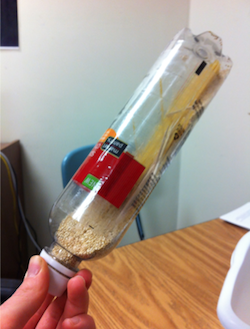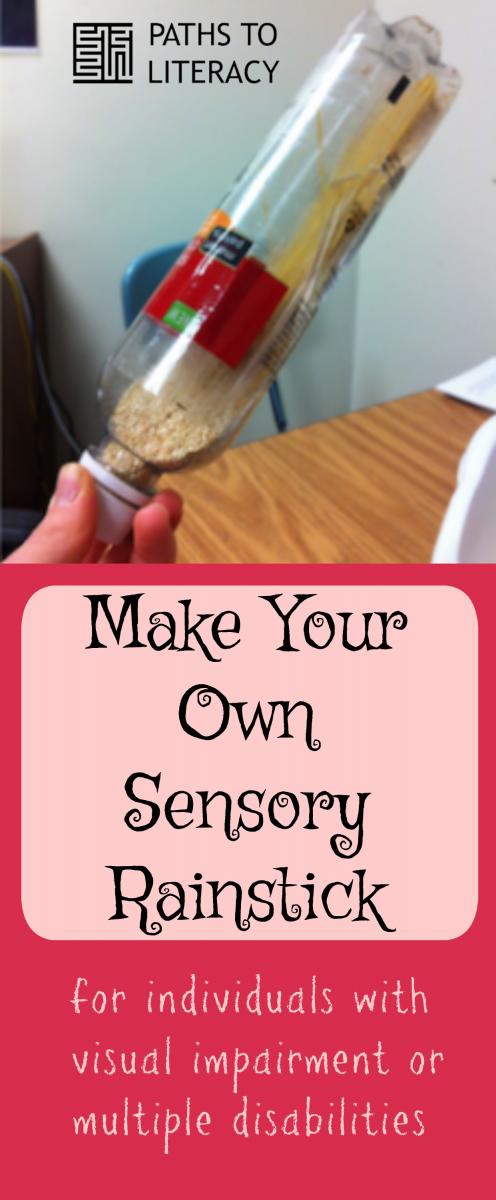Sensory Rainstick for Children with Multiple Disabilities
Submitted by Monique Desany on May 13, 2014

Sensory input can come in a variety of different forms. Music and sounds is one type of stimuli that can allow children with low vision or multiple disabilities engage in or attend to an activity.
Children with cognitive delays may benefit from using a rainstick or other musical instruments in order to learn "cause and effect". If they turn the rainstick a certain way, then it will make a pleasurable sound. This is a very simple, one-step activity, but for children with multiple disabilities it may allow them to engage in a meaningful sensory activity. Turning a rainstick may also be beneficial for children who need to increase or maintain ROM (Range of Motion) in their upper extremities.
Materials:
- Empty, clear water bottle with top
- Toothpicks and skewers
- Small grains (such as quinoa)
Procedure:
- Fill the clear water bottle with toothpicks and skewers (don’t pack it though, leave some room for the grains to move around)
- Fill the water bottle 1/4 to 1/3 of the way full with small grains
- Put the cap on the water bottle and turn it over to hear beautiful sounds of grains falling through a forest of toothpicks! (sounds just like rain!)
Variations:
- Have child turn rainstick in various ways to hear different sounds and/or work on ROM while targeting specific areas of the upper extremity
- Use colored toothpicks or bottles to increase sensory experience visually (especially for kids with low vision)
- Add music to the environment and see if the child can use the rainstick in combination with the rhythm of the music

